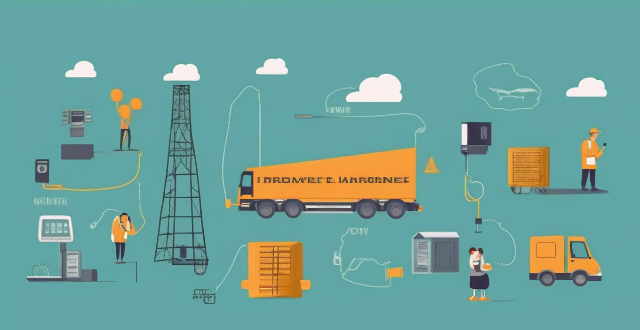Adoption Source

How do climate policies influence renewable energy development and adoption ?
Climate policies play a crucial role in shaping the trajectory of renewable energy development and adoption. These policies are designed to mitigate the effects of climate change by reducing greenhouse gas emissions and promoting the use of clean energy sources. In this article, we will explore the various ways in which climate policies influence renewable energy development and adoption. Governments around the world have implemented a range of incentives and subsidies to encourage the development and adoption of renewable energy sources. These include feed-in tariffs, renewable portfolio standards, tax credits and exemptions, and research and development funding. Carbon pricing mechanisms, such as carbon taxes and cap-and-trade systems, are designed to put a price on carbon emissions. By making fossil fuels more expensive relative to renewable energy sources, these policies create an economic incentive for businesses and consumers to switch to cleaner energy alternatives. Governments also impose regulatory measures to promote renewable energy development and adoption. These include building codes and standards, energy efficiency standards, and renewable energy targets. Public awareness and education campaigns aim to increase public awareness about the benefits of renewable energy and encourage its adoption. These campaigns promote energy conservation, support local renewable energy projects, and raise awareness about the environmental and economic benefits of clean energy sources.

How can carbon credits be used to incentivize renewable energy adoption ?
Carbon credits can incentivize renewable energy adoption by creating a market, providing financial support, encouraging sustainable practices, and raising awareness about climate change.

What is the future outlook for electric vehicle adoption globally ?
The future outlook for electric vehicle adoption globally is promising, driven by government policies, technological advancements, and changing consumer attitudes towards sustainability. Governments are offering tax credits, setting emission standards, and investing in charging infrastructure to encourage EV adoption. Technological advancements such as improved battery technology, autonomous driving, and smart grid integration are also driving adoption. Consumer attitudes towards sustainability and environmental concerns are contributing to the growth of EV adoption. However, challenges and barriers such as high upfront costs, lack of charging infrastructure, and range anxiety must be addressed to achieve widespread adoption.

How effective is solar power as an alternative energy source ?
Solar power is a sustainable and environmentally friendly energy source with decreasing costs and increasing efficiency due to technological advancements.

How does the development of electric vehicle infrastructure affect the adoption rate of EVs ?
The development of electric vehicle infrastructure, including charging stations and supporting technologies, significantly influences the adoption rate of EVs. Availability and accessibility of charging stations are critical factors affecting EV adoption rates. Increased availability and reduced range anxiety can lead to higher demand for EVs and boost their adoption rate. Easy-to-find and accessible charging stations make it easier for potential EV owners to plan their trips and charge their vehicles as needed. The cost of charging an EV also affects its adoption rate, with affordable pricing and transparent pricing information encouraging more people to adopt EVs. Overall, the growth of electric vehicle infrastructure is crucial in determining the adoption rate of EVs.

What is the impact of charging network availability on the adoption of electric vehicles ?
The impact of charging network availability on the adoption of electric vehicles is significant. Factors such as range anxiety, charging time, and the cost of building and maintaining charging infrastructure can influence consumer confidence in EVs. Strategies to improve charging network availability include public-private partnerships, incentives and regulations, and innovation in charging technology. A well-developed charging network can alleviate concerns about EVs and accelerate their adoption.

What challenges have been faced in the adoption and enforcement of climate change legislation ?
Climate change is a global issue that requires immediate attention and action. The adoption and enforcement of climate change legislation are crucial steps in mitigating the effects of climate change. However, several challenges have been faced in this process, including: 1. Lack of Political Will: Governments often prioritize short-term economic gains over long-term environmental sustainability, making it difficult to pass and implement effective climate policies. 2. Economic Barriers: The high cost associated with transitioning to clean energy sources can be a significant barrier to adopting and enforcing climate change legislation. Additionally, the shift towards clean energy can lead to job losses in traditional industries such as fossil fuel extraction and manufacturing. 3. Legal and Institutional Hurdles: Many countries lack comprehensive legal frameworks for addressing climate change, which can hinder the adoption and enforcement of effective climate policies. Weak enforcement mechanisms can also undermine the effectiveness of climate change legislation. 4. Public Awareness and Participation: Public awareness and understanding of climate change issues are essential for the successful adoption and enforcement of climate change legislation. However, many people still lack a basic understanding of the science behind climate change and its potential consequences. Active public participation is crucial for driving change and holding governments accountable for their actions on climate change. Addressing these challenges requires a concerted effort from governments, civil society organizations, businesses, and individuals worldwide. Only by working together can we hope to mitigate the effects of climate change and secure a sustainable future for all.

Can hydroelectric power be considered a renewable energy source ?
Hydroelectric power is often considered renewable due to its reliance on the water cycle, but debates exist over its classification. Advantages include being a renewable resource, having low emissions, and providing energy storage. Disadvantages involve ecosystem impacts, community displacement, and siltation/erosion issues. The definition of "renewable" influences whether hydroelectric power is seen as truly renewable, with varying priorities leading to differing conclusions.

How important is it to have a backup power source in case of emergencies ?
The importance of having a backup power source in case of emergencies is crucial in today's world where we rely heavily on electricity. A backup power source can prevent data loss, maintain essential services, ensure safety, reduce downtime, and improve quality of life during power outages. There are various types of backup power sources available, including UPS, generators, solar power systems, and battery backups. Investing in a backup power source is an investment in peace of mind and preparedness for any emergency situation.

Can a Series Hybrid Electric Vehicle be charged by an external power source ?
Series HEVs can be charged by an external power source, which offers benefits like increased range and reduced emissions. To charge a series HEV using an external power source, you will need a compatible charging station or outlet. Most series HEVs come with a standard charging cord that can be plugged into a household outlet or a dedicated charging station.

What is the current state of fusion power research and its potential as an ultimate renewable energy source ?
Fusion power research aims to harness energy from fusing atomic nuclei, similar to the sun's process. Key developments include the ITER project, breakthroughs in magnetic confinement fusion, and advances in inertial confinement fusion. Challenges include technical hurdles, economic viability, and safety concerns. Fusion power has potential as an ultimate renewable energy source due to its unlimited and clean energy production, minimal environmental impact, and long-term sustainability.

Can ecological taxes be a sustainable source of revenue for governments ?
Ecological taxes can be a sustainable source of revenue for governments if implemented effectively. They promote environmental sustainability, generate revenue, and encourage innovation. However, challenges such as industry resistance, impact on low-income groups, and setting the right tax rate need to be addressed through careful policy design and public engagement.

How do hydrogen fuel cells work and are they a practical alternative energy source ?
Hydrogen fuel cells are devices that convert the chemical energy of hydrogen into electricity. They consist of an anode, cathode, electrolyte, and external circuit. The process involves splitting hydrogen into protons and electrons at the anode, moving protons through the electrolyte, moving electrons through the external circuit, combining protons and electrons with oxygen at the cathode to form water, and producing heat. Hydrogen fuel cells are renewable, have high energy density, zero emissions, and versatile applications. However, they face challenges such as high cost, limited infrastructure, and safety concerns.

What are the benefits of using solar power ?
Solar power is a renewable and sustainable energy source that offers numerous benefits. It can be cost-effective in the long run, environmentally friendly, promotes energy independence, has low maintenance costs, versatile applications, creates jobs, provides government incentives, increases property value, and enhances energy security. As technology advances and awareness grows about renewable energy sources like solar power, its adoption is expected to continue rising worldwide.

What challenges need to be overcome for widespread adoption of metal-air batteries ?
Metal-air batteries have gained significant attention due to their high energy density, low cost, and environmental friendliness. However, there are several challenges that need to be overcome for widespread adoption of these batteries. The major obstacles include anode material corrosion, catalyst degradation, oxygen supply, heat management, and safety concerns. To address these issues, researchers are exploring alternative materials, protective coatings, nanostructured catalysts, solid oxide electrolytes, cooling techniques, and safety protocols. Potential solutions also involve developing new materials and structures for anodes, catalysts, and electrolytes, investigating innovative designs for oxygen storage and supply systems, implementing advanced cooling techniques and safety protocols, and collaborating with industry partners to commercialize promising technologies. By addressing these challenges and leveraging emerging technologies, metal-air batteries have the potential to revolutionize energy storage and power generation in various applications.

What are the challenges and limitations of implementing blockchain technology in various industries ?
The challenges and limitations of implementing blockchain technology in various industries include lack of regulatory clarity, scalability issues, interoperability problems, high energy consumption, limited expertise and talent, privacy concerns, and adoption barriers. These challenges need to be addressed for widespread adoption of blockchain technology.

How can we promote the adoption of electric transportation systems ?
The adoption of electric transportation systems is crucial for reducing greenhouse gas emissions and improving air quality. To promote their widespread use, strategies include government incentives and policies such as tax credits and rebates, grants for infrastructure development, regulation and legislation, and public sector leadership. Education and awareness campaigns through public education programs, marketing campaigns, and demonstration projects can also raise awareness. Infrastructure development involves building a network of charging stations, providing home charging options, and developing battery swapping stations. Technology advancements in battery technology, cost reduction, and autonomous driving can make electric vehicles more appealing. Collaboration and partnerships with automakers, energy companies, and international cooperation can accelerate adoption rates. By implementing these strategies, we can transition to cleaner and more sustainable modes of transportation.

How can regulators encourage adoption of TCFD among companies ?
The Task Force on Climate-related Financial Disclosures (TCFD) was established by the Financial Stability Board (FSB) in 2015 to develop voluntary, consistent global climate-related financial risk disclosures for use by companies. Regulators can encourage adoption of TCFD among companies through various means, including mandatory reporting with clear enforcement mechanisms and penalties, incentives such as tax breaks and funding, education and awareness campaigns, and collaboration with investors, NGOs, and other stakeholders.

How can governments promote the adoption of climate-smart technology ?
Governments can promote the adoption of climate-smart technology by offering financial incentives, creating regulations and standards, educating the public, collaborating with businesses and NGOs, and leading by example.

What challenges need to be addressed for widespread adoption of electric vehicles ?
The challenges for widespread adoption of electric vehicles (EVs) include inadequate charging infrastructure, limited battery technology, high cost, environmental impact during production, and lack of public awareness. Governments and private companies must invest in building a comprehensive network of charging stations, while researchers and manufacturers should focus on developing advanced battery technologies. Incentives such as tax credits, rebates, and subsidies can make EVs more affordable. Manufacturers need to adopt sustainable practices to reduce the environmental impact of their products. Finally, governments and organizations should launch awareness campaigns and educate the public about the benefits of electric cars.

How can a carbon tax be used to encourage the development of renewable energy sources ?
A carbon tax is a fee on burning carbon-based fuels that aims to reduce emissions by making fossil fuels more expensive, encouraging the use of renewable energy sources. It directly impacts prices, changes consumer behavior, provides economic incentives for renewables, creates market signals for businesses, and supports regulatory frameworks. This leads to increased investment in research and development, subsidies, long-term planning security, innovation, and stricter efficiency standards, all of which contribute to the development of renewable energy sources.

What challenges need to be overcome for widespread adoption of 5G ?
The widespread adoption of 5G technology faces several challenges that need to be addressed before it can become a ubiquitous part of our lives, including high costs, regulatory approvals, technical hurdles, public perception, network compatibility and interoperability, training and education, market competition, and environmental impact. Overcoming these challenges requires collaborative efforts from industry leaders, governments, researchers, and consumers alike. By addressing these issues head-on, we can pave the way for a future where 5G technology truly transforms how we live, work, and connect with each other.

What is the best cryptocurrency to invest in ?
The article provides a summary of the best cryptocurrencies to invest in, including Bitcoin (BTC), Ethereum (ETH), Binance Coin (BNB), and Cardano (ADA). It highlights the pros and cons of each cryptocurrency, such as high liquidity and widespread adoption for Bitcoin, smart contract functionality and a large developer community for Ethereum, usefulness on the Binance exchange and a burn mechanism for Binance Coin, and a strong academic foundation and focus on security and sustainability for Cardano. The conclusion emphasizes the importance of considering factors such as liquidity, adoption, and potential for growth when choosing a cryptocurrency to invest in, and encourages readers to do their own research before making an investment decision.

What are the potential economic impacts of widespread adoption of Climate-Smart Technologies ?
The widespread adoption of climate-smart technologies has the potential to bring significant economic benefits, including job creation, energy savings, improved public health, and enhanced competitiveness for companies offering sustainable products and services. These technologies aim to reduce greenhouse gas emissions, adapt to the changing climate, and ensure food security while promoting sustainable development. By implementing energy-efficient measures and transitioning to renewable energy sources, businesses and households can significantly reduce their energy bills. Reducing air pollution and other environmental hazards through the adoption of clean technologies can lead to improved public health outcomes. Companies that adopt climate-smart technologies may gain a competitive advantage by offering more sustainable products and services. Overall, the adoption of climate-smart technologies presents numerous opportunities for economic growth and sustainability.

What policies are necessary to encourage the adoption of energy storage solutions ?
Energy storage solutions are becoming increasingly important in the modern world. They provide a way to store excess energy generated by renewable sources, such as solar or wind power, for use at a later time. This can help to balance the grid and ensure a stable supply of electricity....

How can we increase the adoption rate of electric vehicles to support renewable energy use ?
Strategies to increase the adoption rate of electric vehicles include government incentives, education campaigns, innovation in technology, and collaboration with businesses.

How do renewable energy credits and incentives influence the adoption of green technologies ?
Renewable energy credits (RECs) and incentives are crucial for promoting the adoption of green technologies. They offer economic benefits to individuals, businesses, and governments investing in renewable energy sources, making these technologies more financially attractive. RECs represent proof of electricity generated from renewable sources, while incentives can include tax breaks, grants, rebates, and feed-in tariffs. These mechanisms reduce upfront costs, provide long-term financial benefits, enhance market competitiveness, drive innovation, and foster environmental stewardship. Overall, RECs and incentives are essential for accelerating the transition towards a sustainable energy future.

What is the role of government policies in promoting the adoption of clean production technologies ?
Government policies are crucial in promoting clean production technologies by providing regulatory frameworks, fiscal incentives, information and education, funding for research and development, and international cooperation. These policies create an enabling environment for businesses to adopt cleaner technologies, leading to a more sustainable future.

How can consumers support the adoption of clean production technologies by choosing eco-friendly products ?
Consumers play a significant role in driving the adoption of clean production technologies by making conscious choices about the products they buy. By choosing eco-friendly products, consumers can support companies that prioritize sustainability and encourage the development of cleaner technologies. Here are some ways consumers can support the adoption of clean production technologies: 1. Research and Choose Sustainable Brands 2. Reduce Consumption and Waste 3. Engage with Companies and Advocate for Change 4. Educate Others About Sustainable Choices

Can geothermal energy be a major source of power in colder climates ?
Geothermal energy, derived from the Earth's natural heat, can be a significant power source in colder climates. Key considerations include the availability of geothermal resources, technology and infrastructure, economic feasibility, environmental impact, and societal and regulatory factors. Challenges such as permafrost and public acceptance can be addressed through careful planning, technological innovation, and effective policy measures. If these factors are favorably aligned, geothermal energy could play a significant role in meeting the energy demands of colder regions while contributing to global efforts to combat climate change.